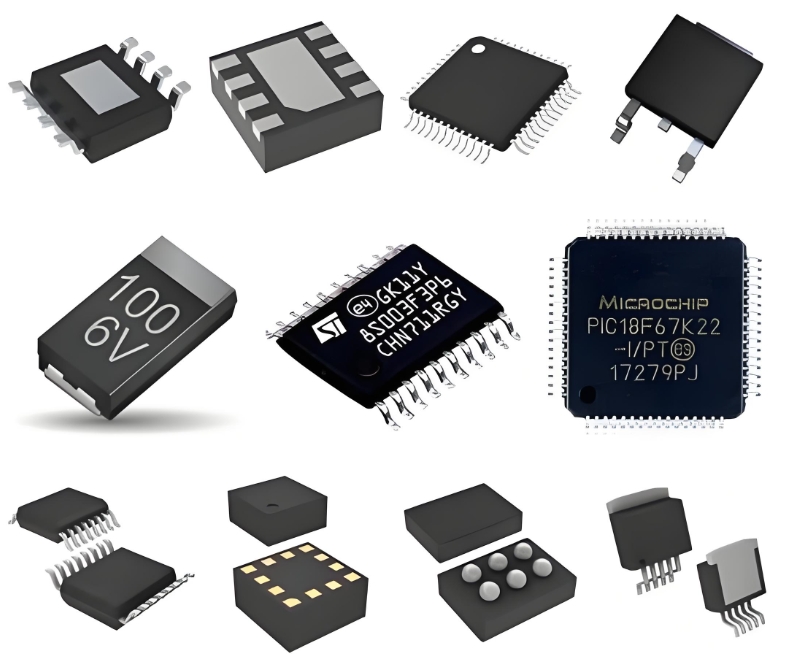**High-Speed Data Acquisition System Design Using the AD9230BCPZ11-200 12-Bit ADC**
The design of modern high-speed data acquisition (DAQ) systems is a critical enabler for applications ranging from medical imaging and radar to communications test equipment and scientific instrumentation. At the heart of such systems lies the analog-to-digital converter (ADC), whose performance dictates the overall fidelity and capability of the entire signal chain. This article explores the key design considerations and implementation strategies for a high-performance DAQ system utilizing the **AD9230BCPZ11-200**, a 12-bit, 200 MSPS ADC from Analog Devices.
**System Architecture and Key Components**
A typical high-speed DAQ system comprises several critical stages: the analog front-end (AFE), the ADC itself, the clocking circuitry, and the digital data interface. The **AD9230BCPZ11-200** is optimally selected for its combination of high sampling rate (200 MSPS) and 12-bit resolution, offering a strong balance between speed and accuracy for capturing fast transient signals. Its differential input structure is essential for rejecting common-mode noise, a vital feature in electrically noisy environments.
The design of the **analog front-end (AFE)** is arguably the most crucial factor in achieving the ADC's specified performance. It must precisely condition the input signal for the ADC. This involves amplification, filtering, and single-ended to differential conversion if necessary. A high-performance, low-noise differential amplifier (e.g., ADA4927) is often used to drive the ADC's inputs. Furthermore, a passive or active anti-aliasing filter (AAF) must be designed with a sharp cut-off just below the Nyquist frequency (100 MHz in this case) to eliminate out-of-band noise and prevent aliasing.
**Low-Jitter Clocking: The Foundation of SNR**
The system's dynamic performance is highly dependent on the quality of the sampling clock. **Phase noise or jitter on the clock signal directly degrades the signal-to-noise ratio (SNR)** of the ADC, especially for higher input frequencies. The relationship is defined by the equation: SNR = -20log10(2π × f_analog × t_jitter). Therefore, for the AD9230 to achieve its excellent SNR specification, it must be driven by an ultra-low-jitter clock source, such as a dedicated clock generator IC or a voltage-controlled oscillator (VCO) with high spectral purity. The clock signal must be treated as a sensitive analog signal, routed with controlled impedance traces and proper isolation from digital switching noise.
**Power Integrity and PCB Layout**
A high-speed ADC like the AD9230, with its rapid digital switching, demands a robust power delivery network (PDN). **Separate analog and digital power domains** (AVDD, DRVDD) are mandatory and should be isolated using ferrite beads or directly from independent low-noise, low-dropout regulators (LDOs). Each power supply rail must be heavily decoupled with a combination of bulk, tantalum, and ceramic capacitors placed as close as possible to the ADC's pins to provide a low-impedance path for high-frequency currents and prevent noise from coupling between supply rails.

Printed circuit board (PCB) layout is equally critical. The design must employ a multilayer board with dedicated ground and power planes. The analog and digital ground planes should be connected at a single point, typically beneath the ADC. Sensitive analog input and clock traces must be implemented as controlled-impedance differential pairs, shielded by adjacent ground planes, and ruthlessly isolated from noisy digital data lines (D0-D11) to minimize digital feedback.
**Digital Data Handling and Interface**
The AD9230 provides 12 parallel LVDS (Low-Voltage Differential Signaling) data outputs plus a data clock (DCO) and frame clock (FCO). This parallel interface can be captured by an FPGA, which serves as the ideal digital receiver. The FPGA deserializes the data, often implements further digital signal processing (DSP) like filtering or decimation, and manages the transfer to a host processor or via a high-speed serial link. Care must be taken to ensure the FPGA's I/O banks are configured for LVDS standards and that the trace lengths for the data bus are matched to avoid skew.
**ICGOODFIND**
Designing a high-speed DAQ system with the AD9230BCPZ11-200 requires a holistic approach that extends far beyond simply selecting a high-performance ADC. **Success is found in the meticulous design of the analog front-end, the implementation of an ultra-low-jitter clocking solution, a robust power delivery network, and a disciplined PCB layout strategy that respects the mixed-signal nature of the system.** Neglecting any one of these areas will prevent the system from achieving the performance promised by the ADC's datasheet.
**Keywords:**
1. **High-Speed Data Acquisition**
2. **Analog Front-End (AFE)**
3. **Clock Jitter**
4. **Power Integrity**
5. **PCB Layout**
